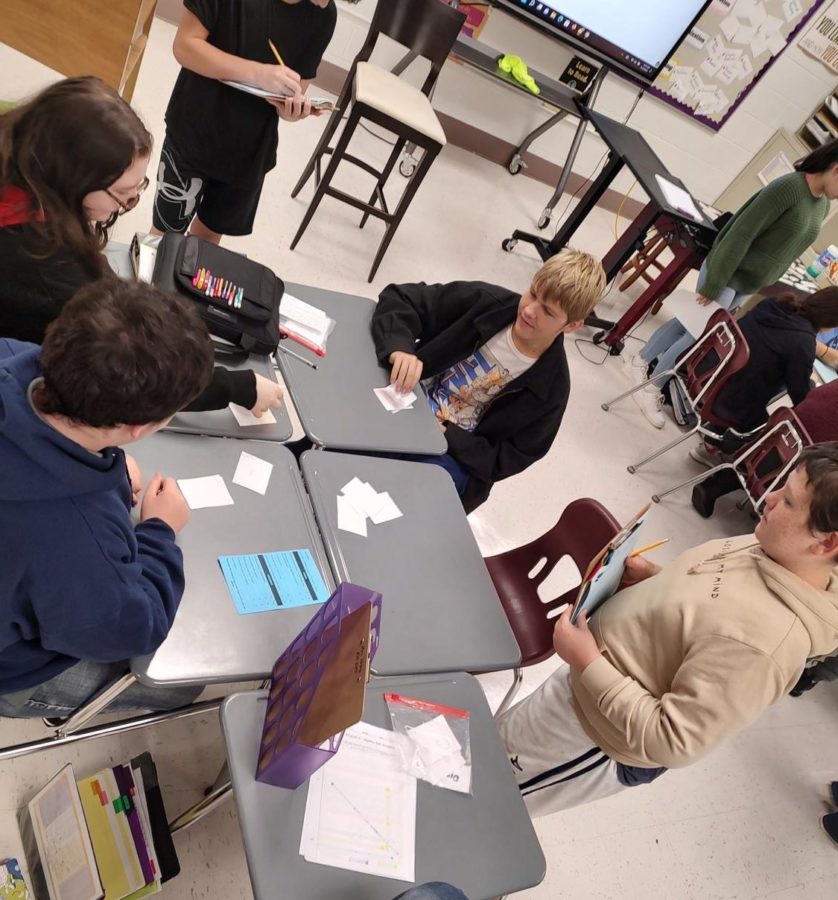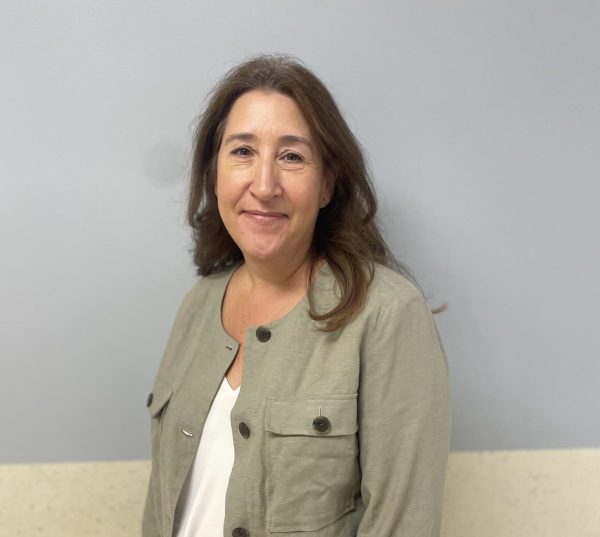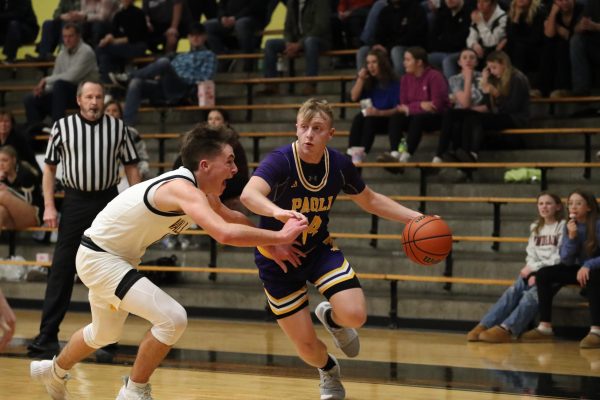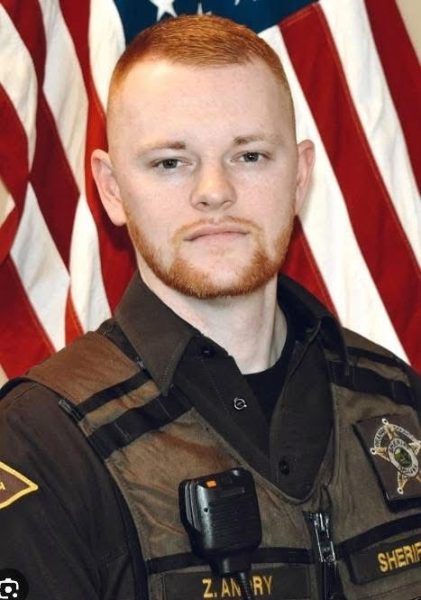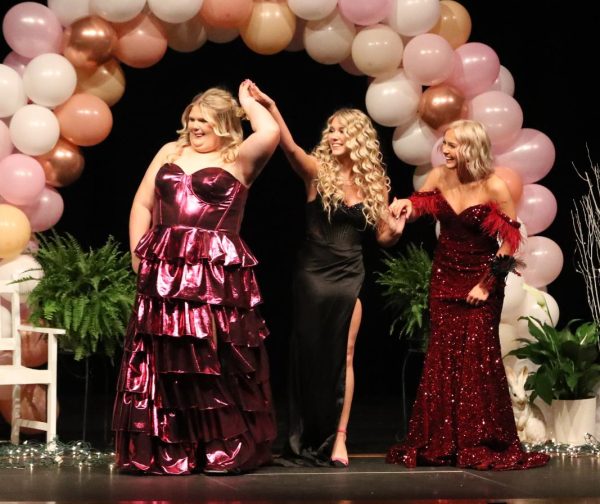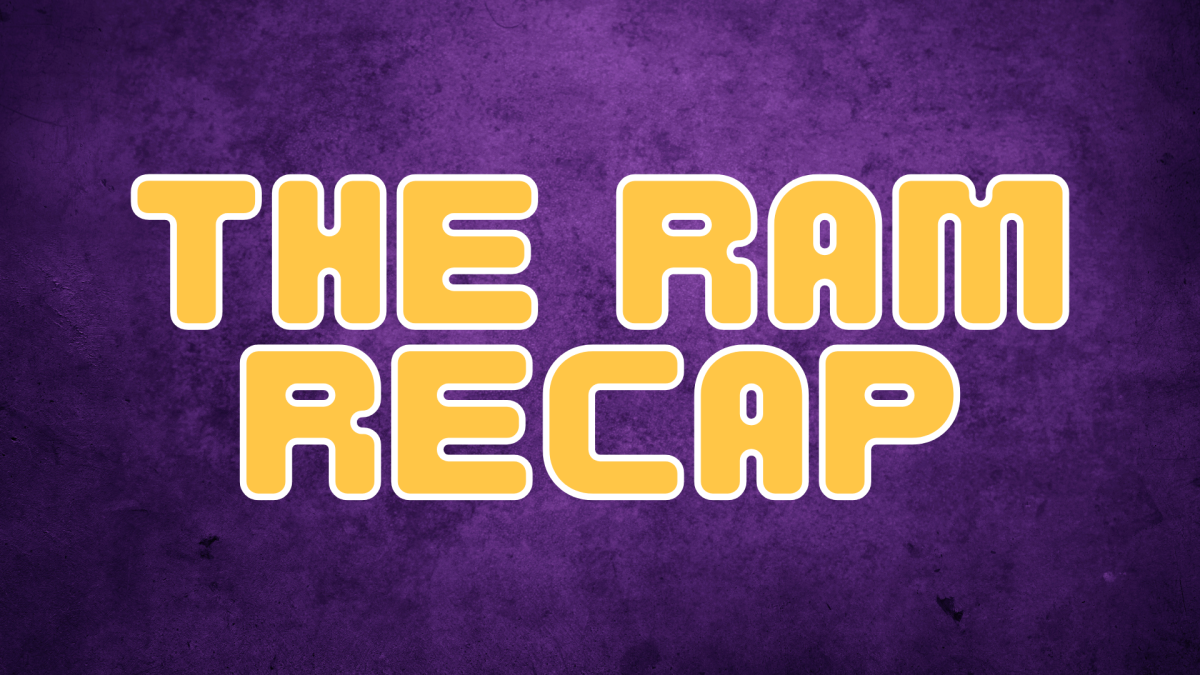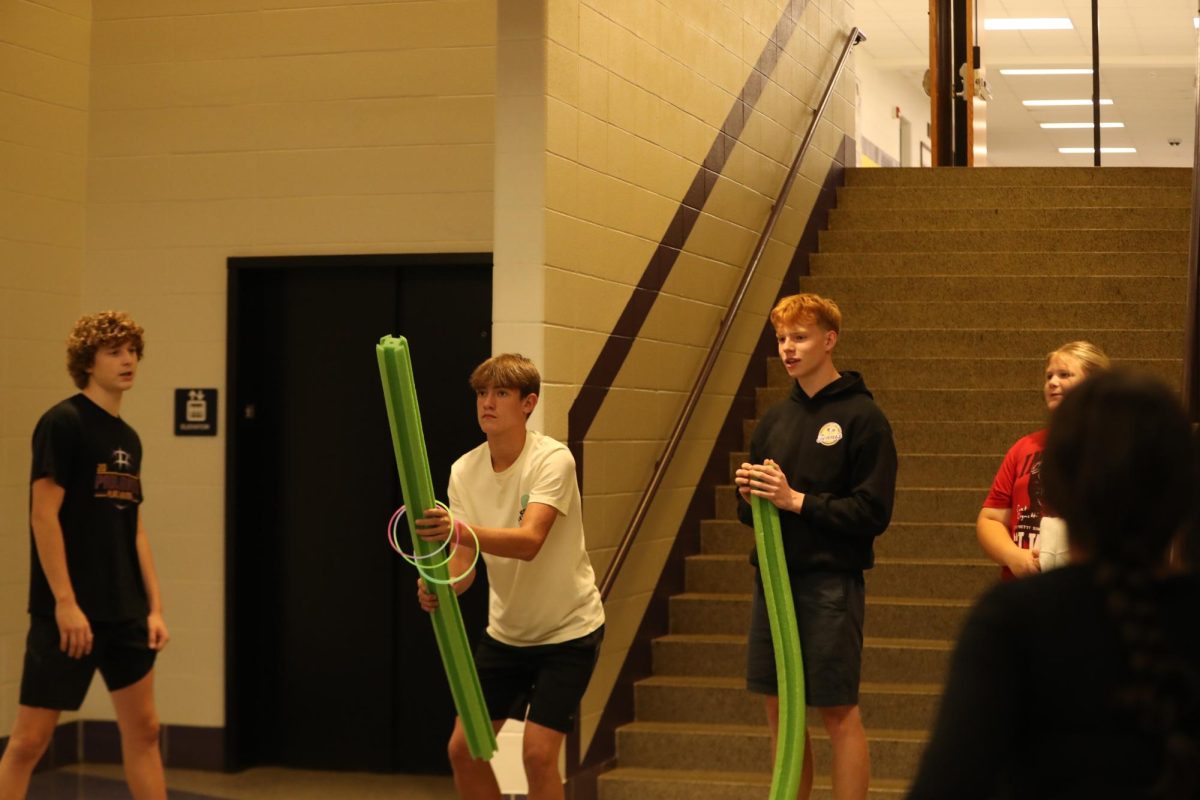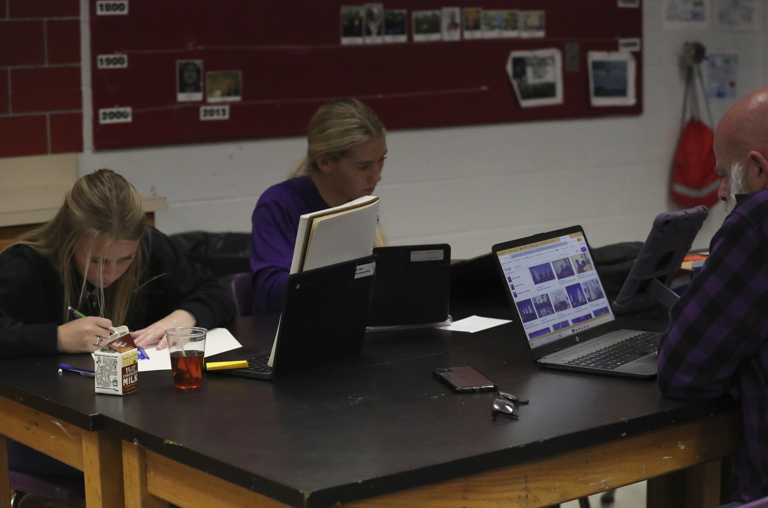Game Day Develops STEM Skills
Early release time has a science focus
Junior high students play games during their STEM activities, which was held during a short day.
November 22, 2022
On November 2, PHS held its monthly early release day for all students. While the high school participated in Speech Contest and college and career tours, the junior high students participated in a day of STEM learning.
STEM stands for, Science, Technology, Engineering and Mathematics.
The junior high is getting STEM certified through the Indiana Department of Education (IDOE), and the STEM days are part of the requirements.
¨STEM is a great way to allow students to have hands-on activities that include problem-solving and allow students to develop employability skills for the future,” said Assistant Principal Adam Stroud.
During the half-day, eighth grade students played STEM board games they created the last week of October. The board games had to interpret the periodic table in some form. Seventh grade students made STEM cars, crashed them into the wall and sent them down a ramp with a real egg inside that they tried to keep unbroken. Seventh grade used net force, acceleration and mass in their STEM day cars. They also had a budget to stay on while making the plan for their cars.
The projects for the STEM day were planned by eighth grade Science Teacher Lori Stroud and seventh grade Science Teacher Lindsay Pritchett.
“It was kind of confusing but it was also fun at the same time,” said eighth grader Aiyanna Hall.
Every student worked hard with their groups to create their board game. Many chose games like Candyland and Bingo to model theirs after. Once their board games were created, students completed pages in their STEM packet and got prepared for the next day.
On Wednesday, students went to homeroom where their teachers put them in their groups and told them what classroom to go to. Once students were ready they put their board game together and listened to their teacher’s instructions about where they go next and whose game they play first.
Students played other student-created games and recorded their thoughts about them. While a group was playing their games, they watched the other group play the game they made and filled out a paper to record how that group of students’ game was.

